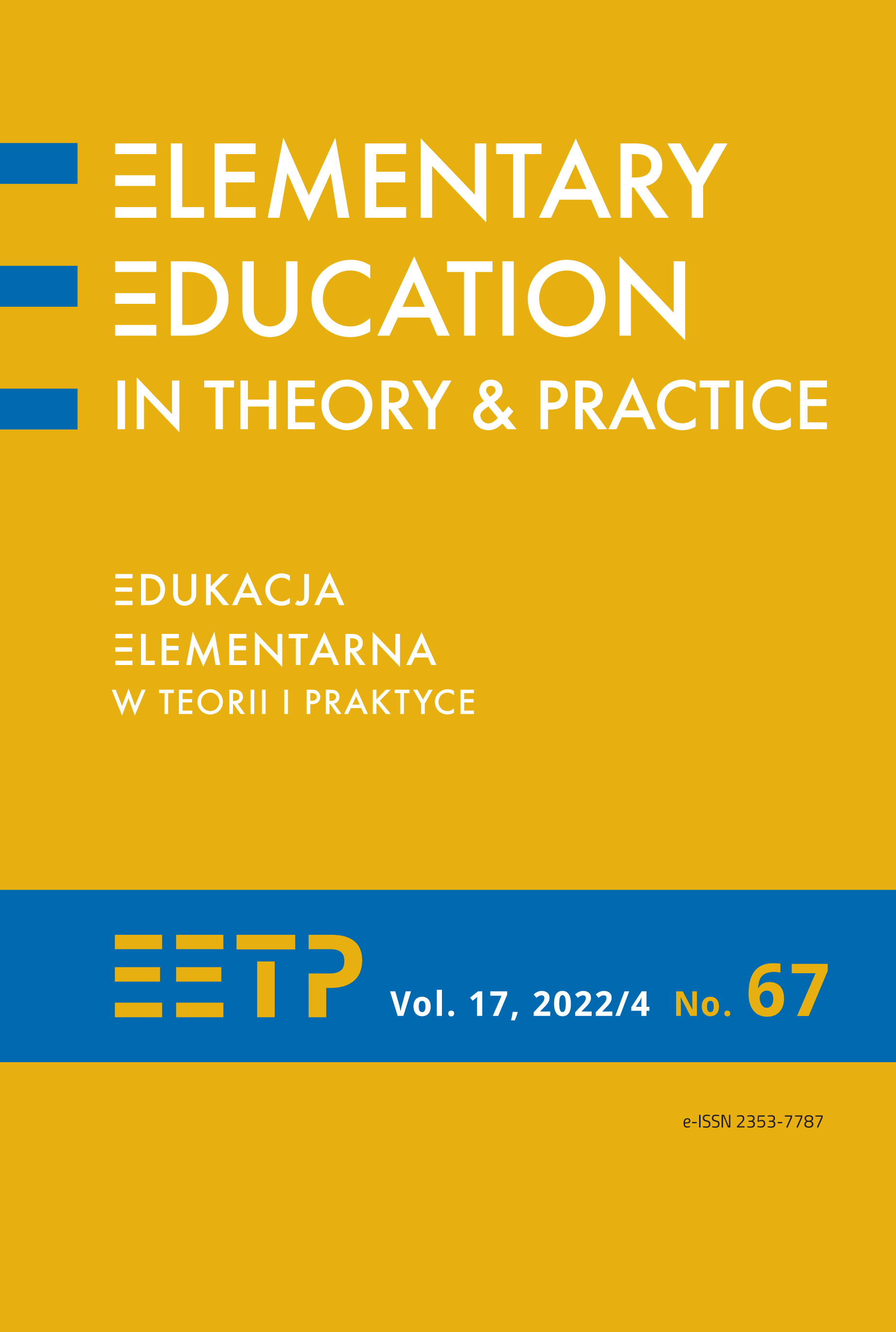Education of a Child with ASD for Values – Therapeutic Foundations
Abstract
This article is both theoretical and practical, and it presents two basic therapeutic foundations that should be taken into account in the therapy of autistic children whom we want to teach values. The aim of the article is to justify the choice of linguistic competences and the ability to mentalize as two main areas on which therapy should be based (especially the therapy with goals of educating children for values). The first part of the text focuses on these two areas: language and mentalizing, and their scientific background in working with children with ASD. A lot of space in the article was dedicated to the concept of mentalizing, which is less known to therapists and special educators. Among other things, the neurobiological determinants of this process, its relationship with learning, and interdependencies with linguistic competences, were indicated. The second part of the article presents, based on many years of practical experience of the author of the text, selected therapeutic techniques (such as the communication technique: face-to-face dialogue, the technique of keeping a diary or the emotional regulation training) which help children achieve the goals of learning relationships and education for values.
References
Allen J.G., Fonagy P., Bateman A.W. (2014). Mentalizowanie w praktyce klinicznej, tłum. M. Cierpisz, Kraków: Wydawnictwo Uniwersytetu Jagiellońskiego.
Brothers L. (1997). Friday’s Footprint: How Society Shapes the Human Mind, New York: Oxford University Press.
Cieszyńska J. (2011). Wczesna diagnoza i terapia zaburzeń autystycznych. Metoda Krakowska, Kraków: Omega Stage Systems.
Cieszyńska-Rożek J. (2013). Metoda Krakowska wobec zaburzeń rozwoju dzieci. Z perspektywy fenomenologii, neurobiologii i językoznawstwa, Kraków: Omega Stage Systems.
Godlewski G., Mencwel A., Sulima R. (2003). Antropologia słowa. Zagadnienia i wybór tekstów, Warszawa: Wydawnictwo Uniwersytetu Warszawskiego.
Jańczak M. (2018). Mentalizacja w praktyce klinicznej – perspektywa psychodynamiczna, „Psychoterapia”, nr 4 (187), s. 5–17.
Kurcz I. (1987). Język a reprezentacja świata w umyśle, Warszawa: Państwowe Wydawnictwo Naukowe.
Maruszewski T., Doliński D., Łukaszewski W., Marszał-Wiśniewska M. (2020). Emocje i motywacja, [w:] J. Strelau, D. Doliński (red.), Psychologia akademicka, t. 1, Gdańsk: Gdańskie Wydawnictwo Psychologiczne, s. 513–649.
Orłowska-Popek Z. (2017). Programowanie języka w terapii logopedycznej, Kraków: Wydawnictwo Naukowe Uniwersytetu Pedagogicznego.
Ricoeur P. (1989). Język, tekst, interpretacja. Wybór pism, tłum. P. Graff, K. Rosner, Warszawa: Państwowy Instytut Wydawniczy.
Soroko E. (2007). Regulacja emocji w kontekście rozwoju osobowości, [w:] Ł. Kaczmarek, A. Słysz (red.), Serce i umysł, Poznań: Wydawnictwo Naukowe Uniwersytetu Adama Mickiewicza, s. 55–81.
Tomasello M. (2002). Kulturowe źródła ludzkiego poznawania, tłum. J. Rączaszek, Warszawa: Państwowy Instytut Wydawniczy.
Winczura B. (2010). Wstęp, [w:] tejże (red.), Autyzm na granicy zrozumienia, Kraków: Impuls, s. 7–8.
ICD-11. International Classification of Diseases 11th Revision. https://icd.who.int/en
Copyright (c) 2022 Elementary Education in Theory and Practice

This work is licensed under a Creative Commons Attribution-NoDerivatives 4.0 International License.
- When submitting a text, the author declares that he/she is the Author of the article (hereinafter referred to as the “Work”) and:
- he/she owns the exclusive and unlimited copyright to the Work,
- is entitled to dispose of the copyright to the Work.
Declares that it does not infringe any third party copyrights or legal rights.
Declares that there is no conflict of interest.
2. At the same time, the Author grants the Ignatianum University in Cracowa royalty-free, non-exclusive and territorially unlimited licence to use the Work in the following fields of exploitation:
- recording the Work in a hard copy, as well as on a digital or magnetic medium;
- reproduction of the Work using any technique, without limitation of the number of editions or copies;
- distribution of the Work and its copies on any medium, including marketing, sale, lending, and rental;
- introduction of the Work into a computer memory;
- disseminating the Work in information networks, including in the Internet;
- public performance, exhibition, display, reproduction, broadcasting and re-broadcasting, as well as making the Work available to the public in such a way that everyone can have access to it at a time and place of their own choosing;
- within the scope of dependent rights to the Work, including in particular the right to make necessary changes to the Work resulting from editorial and methodical development, as well as to translate the Work into foreign languages;
The licence is granted from the moment of the transfer of the Work to the Ignatianum University in Cracow. The Ignatianum University in Cracow is entitled to grant further sub-licences to the Work within the scope of the right granted. The licence is time-limited and it is granted for a period of 15 years, starting from the date of its granting.
Authors are permitted and encouraged to publish their text online (e.g. in their institution’s repository or on the institution’s website) before or during the submission process as this may lead to beneficial exchanges, as well as earlier and greater citation of the published text (See The Effect of Open Access). We recommend using any of the following portals of research associations:
- ResearchGate
- SSRN
- Academia.edu
- Selected Works
- Academic Search




